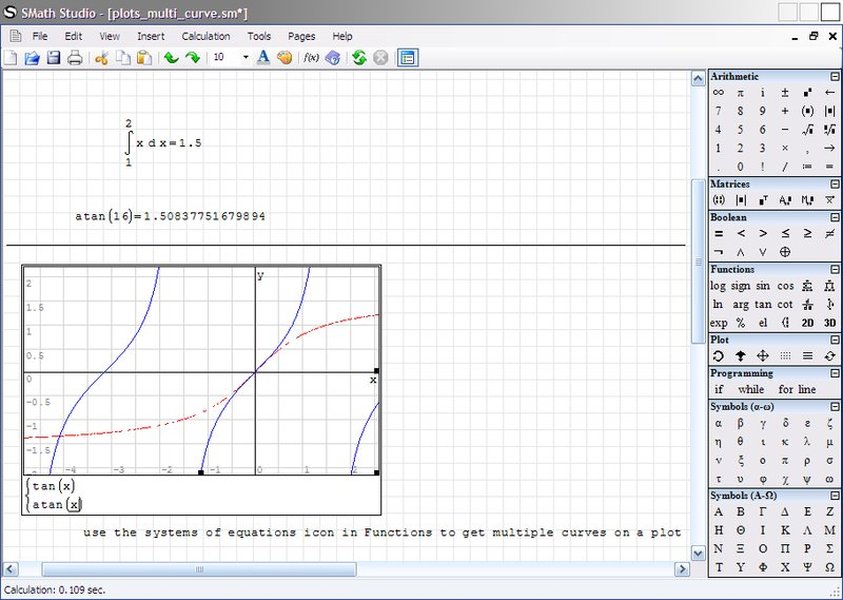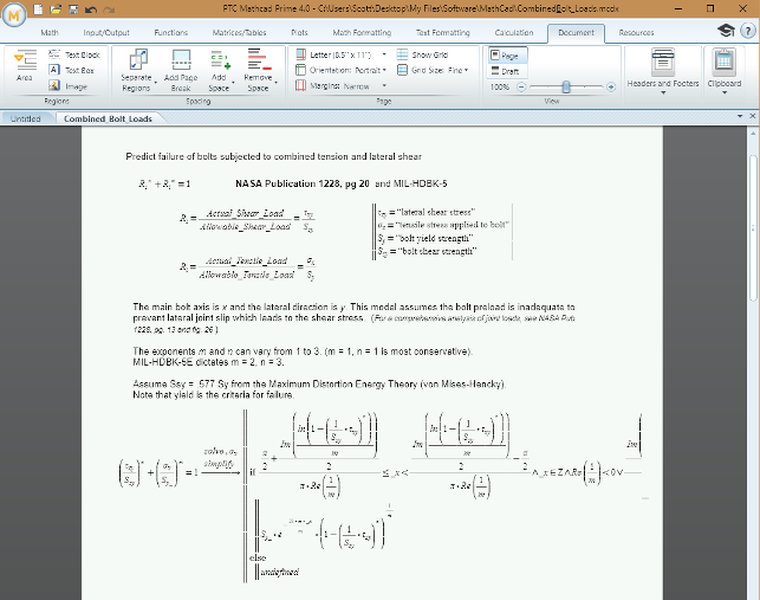
Unlocking Your Mathcad Files: Exploring Free Conversion Pathways
Discover non-commercial tools and methods to translate Mathcad worksheets into SMath, Python, or other editable formats for broader accessibility.
Many engineers, students, and researchers rely on Mathcad for complex calculations and technical documentation. However, the proprietary nature of Mathcad files can pose challenges when needing to share, migrate, or integrate these calculations into different environments, especially without ongoing access to commercial licenses. Fortunately, a growing ecosystem of non-commercial tools and community-driven efforts offers pathways to convert Mathcad native files (often .xmcd or .mcd formats) into more open and editable alternatives like SMath Studio files, Python scripts, or other human-readable formats. This guide explores these options, detailing their capabilities and limitations.
Key Insights: Converting Mathcad Files
- SMath Studio Conversion: The
mathcad2smathPython tool is a prominent non-commercial solution for converting Mathcad.xmcdfiles to a format compatible with SMath Studio. Direct opening in SMath is sometimes possible but may require manual adjustments. - Python Integration & Transcription: While no direct, universal non-commercial Mathcad-to-Python script converter exists, methods include manual transcription, custom XML parsing of Mathcad files, and using API wrappers like
MathcadPy(which requires a Mathcad installation) to interact with worksheets programmatically. - Human-Readable Document Formats: Tools like
PTC-Mathcad-to-LaTeX-parsercan convert Mathcad files into LaTeX, a highly readable format excellent for documentation, though not directly executable for calculations without further processing.
Transitioning from Mathcad to SMath Studio
SMath Studio is a popular free, open-source alternative to Mathcad, offering a similar What You See Is What You Get (WYSIWYG) interface and robust support for units of measurement. This makes it an attractive target for Mathcad users seeking a non-commercial solution.
Using the mathcad2smath Conversion Tool
The most direct non-commercial method for converting Mathcad files to an SMath-compatible format is by using the mathcad2smath tool. This is a Python-based command-line utility specifically designed for this purpose.
Key Features of mathcad2smath:
- Format Conversion: It processes Mathcad XML files (
.xmcd) and converts them into an XML structure that SMath Studio can read and interpret, often saved as.smfiles or SMath-compatible.xmcd. - Open Source: Available on PyPI (Python Package Index) and GitHub, it's a community-supported project.
- Batch Processing: It can be used to convert multiple files, which is beneficial for migrating larger collections of worksheets.
While mathcad2smath significantly aids conversion, it's important to note that perfect fidelity isn't always guaranteed due to inherent differences between Mathcad and SMath Studio, particularly with complex programming blocks, specific built-in functions, or advanced plotting features. Manual review and adjustments in SMath Studio are often necessary after conversion.

SMath Studio offers a user interface and functionality similar to Mathcad, making it a popular free alternative.
Directly Opening Mathcad Files in SMath Studio
SMath Studio itself has some capability to directly open or import Mathcad files. The success of this method can vary depending on the complexity of the Mathcad worksheet and the versions of the software involved. Simpler worksheets with basic formulas might convert reasonably well, but more complex elements like "Given-Find" solve blocks or embedded images (which might need to be in BMP format for SMath to recognize from older Mathcad files) can lead to errors or incomplete conversions.
Pathways to Python: From Mathcad Worksheets to Scripts
Python, with its extensive scientific computing libraries like NumPy, SciPy, and SymPy, is a powerful environment for engineering calculations. However, translating Mathcad's document-centric, WYSIWYG calculations into executable Python scripts is generally a more involved process without a single, push-button non-commercial converter.
Manual Transcription and Custom Parsing
Manual Rewriting:
For many, the most straightforward, albeit labor-intensive, approach is to manually rewrite the logic and equations from Mathcad worksheets into Python scripts. This allows for tailoring the Python code to specific needs and leveraging Python's strengths in data handling, automation, and integration with other tools.
XML Parsing:
Mathcad's .xmcd files are XML-based, meaning their structure and content (including mathematical expressions) can be programmatically parsed. Advanced users can write custom Python scripts using XML parsing libraries (like `xml.etree.ElementTree`) to extract equations, variables, and logic, and then attempt to translate these into Python syntax. This approach requires significant programming expertise and a deep understanding of both Mathcad's XML schema and the target Python libraries.

Complex Mathcad features like 'Solve Blocks' can present challenges for automated conversion.
Using `MathcadPy` for API Interaction
MathcadPy is an open-source Python wrapper for the Mathcad Prime COM Automation API. This tool doesn't convert Mathcad files directly into standalone Python scripts. Instead, it allows Python scripts to communicate with a running instance of Mathcad Prime. Through MathcadPy, you can:
- Programmatically open and manipulate Mathcad worksheets.
- Get and set variable values.
- Execute calculations within Mathcad and retrieve results.
This is useful for integrating Mathcad's calculation engine into larger Python-based workflows or for extracting data and equations. However, it requires a licensed installation of Mathcad Prime to function.
Python-Powered Mathcad Alternatives
Some modern tools aim to provide a Mathcad-like experience using Python as the backend calculation engine. For instance, EngineeringPaper.xyz is a free, open-source web application that allows for creating engineering calculations with natural math notation, units, and Python-generated plots. While not a converter for existing Mathcad files, it represents a way to create new, human-readable, and Python-backed calculation documents.
This video demonstrates EngineeringPaper.xyz, a Mathcad alternative that can automatically generate Python code from mathematical expressions, showcasing how Python can be integrated into a Mathcad-like workflow.
Converting to Other Human-Readable Formats: LaTeX
For users primarily interested in archiving or sharing the *documentation* aspect of Mathcad worksheets in a human-readable and editable format, LaTeX is an excellent option. LaTeX is a high-quality typesetting system widely used for scientific and technical documents.
Using `PTC-Mathcad-to-LaTeX-parser`
The PTC-Mathcad-to-LaTeX-parser is an open-source Python application available on GitHub. Its goal is to read PTC Mathcad 15 files (.xmcd) and convert their content, particularly mathematical expressions and text regions, into LaTeX files (.tex).
Benefits and Limitations:
- High-Quality Output: LaTeX produces professionally typeset documents, making mathematical formulas clear and readable.
- Editable Text: The resulting
.texfile is plain text and can be edited with any text editor. - Not Executable: This conversion focuses on visual representation and documentation. The LaTeX output is not directly executable for calculations in the way an SMath or Python file would be.
- Feature Support: The parser might not support all Mathcad features, and complex layouts or programming elements may not translate perfectly.
Comparative Overview of Conversion Pathways
The choice of conversion method depends on the desired outcome, the complexity of the Mathcad files, and the willingness to perform manual adjustments. The following radar chart provides a visual comparison of the primary non-commercial conversion pathways discussed, based on several key criteria. Note that these are qualitative assessments based on available information.
This chart highlights that conversion to SMath via mathcad2smath often provides a good balance of tool availability, calculation fidelity, and ease of obtaining an executable output. Manual Python conversion offers high editability but requires significant effort. LaTeX conversion excels in readability for documentation but is not intended for direct calculation.
Summary of Conversion Options
The following table summarizes the primary non-commercial methods for converting Mathcad files:
| Target Format | Primary Non-Commercial Method/Tool | Key Characteristics | Limitations/Considerations |
|---|---|---|---|
| SMath Studio | mathcad2smath (Python CLI tool) |
Converts .xmcd to SMath-compatible format. Supports batch processing. Open source. |
May require manual adjustments for complex blocks (e.g., Given/Find, programming) or specific functions. Best for Mathcad 14/15 XML-based files. |
| SMath Studio | Direct open in SMath Studio | SMath attempts to parse and adapt Mathcad files. | Compatibility is not guaranteed, especially for complex features or newer/older Mathcad versions. Images might need to be in BMP format. Errors may occur. |
| Python Script | Manual Transcription | Rewrite logic and equations using Python libraries (NumPy, SymPy, etc.). Full control over output. | Time-consuming and error-prone. Requires a thorough understanding of the original Mathcad logic and Python programming. |
| Python Script | Custom XML Parsing | Develop scripts to parse .xmcd (XML) structure and translate elements to Python code. |
Requires significant programming effort and knowledge of Mathcad's XML schema. No universal free tool exists. |
| Python Integration (not direct conversion) | MathcadPy (API Wrapper) |
Programmatic interaction with a running Mathcad Prime instance. Extract data, set variables, execute calculations. | Requires a licensed Mathcad Prime installation. Does not produce standalone Python script files from Mathcad files. |
| LaTeX Document | PTC-Mathcad-to-LaTeX-parser (Python tool) |
Converts Mathcad 15 files (.xmcd) to LaTeX (.tex) for documentation. Human-readable. |
Partial support for all Mathcad features. Output is for document typesetting, not direct calculation. Focuses on presentation. |
Visualizing Conversion Pathways: A Mindmap
To better understand the relationships between Mathcad files and the various non-commercial conversion avenues, the following mindmap illustrates the key tools and methods discussed:
(Non-Commercial Paths)"] smath["To SMath Studio"] tool_smath["Tool: mathcad2smath
(Python CLI)"] details_smath["Input: .xmcd
Output: SMath-compatible .xmcd/.sm"] method_smath["Method: Direct Open in SMath"] caveats_smath["Caveats: Potential errors,
manual fixes needed"] python["To Python"] manual_python["Method: Manual Transcription"] libs_python["Libraries: NumPy, SciPy, SymPy"] xml_python["Method: Custom XML Parsing"] details_xml["Input: .xmcd (XML)
Requires: Programming skills"] wrapper_python["Tool: MathcadPy (Wrapper)"] details_wrapper["Function: Interact with Mathcad via API
Requires: Mathcad Installation"] other["To Other Human-Readable Formats"] latex["Target: LaTeX"] tool_latex["Tool: PTC-Mathcad-to-LaTeX-parser"] output_latex["Output: .tex (document format)"] alternatives["Re-creation in Alternatives"] examples_alt["Examples: Maxima, Octave,
EngineeringPaper.xyz, SMath Studio"]
This mindmap visually organizes the options, showing that direct conversion is most established for SMath Studio, while Python and LaTeX involve different approaches, often requiring more manual intervention or serving different purposes like documentation.
Frequently Asked Questions (FAQ)
mathcad2smath Python command-line tool is widely regarded as the most effective non-commercial option for converting Mathcad .xmcd files to a format compatible with SMath Studio. However, manual verification and adjustments in SMath Studio are often necessary.MathcadPy if you have a Mathcad installation.Conclusion
Navigating the conversion of proprietary Mathcad files into non-commercial, editable formats involves understanding the available tools and their limitations. For users seeking a Mathcad-like experience, SMath Studio, coupled with the mathcad2smath converter, offers the most direct path. Transitioning to Python typically requires more hands-on effort, either through manual transcription or custom scripting, but provides unparalleled flexibility. For documentation, LaTeX converters offer a robust solution. While no single tool provides a perfect, one-click solution for all scenarios, these non-commercial options empower users to unlock their Mathcad calculations for broader use and long-term accessibility.
Recommended Further Exploration
- How can I use the mathcad2smath tool for batch converting multiple Mathcad XMCD files to SMath format?
- What is a step-by-step guide for manually transcribing Mathcad formulas to Python using NumPy and SymPy libraries?
- How do SMath Studio and Mathcad Prime compare in terms of features and limitations for engineering calculations?
- What are the best practices for parsing Mathcad XMCD files with Python to extract mathematical equations and data?